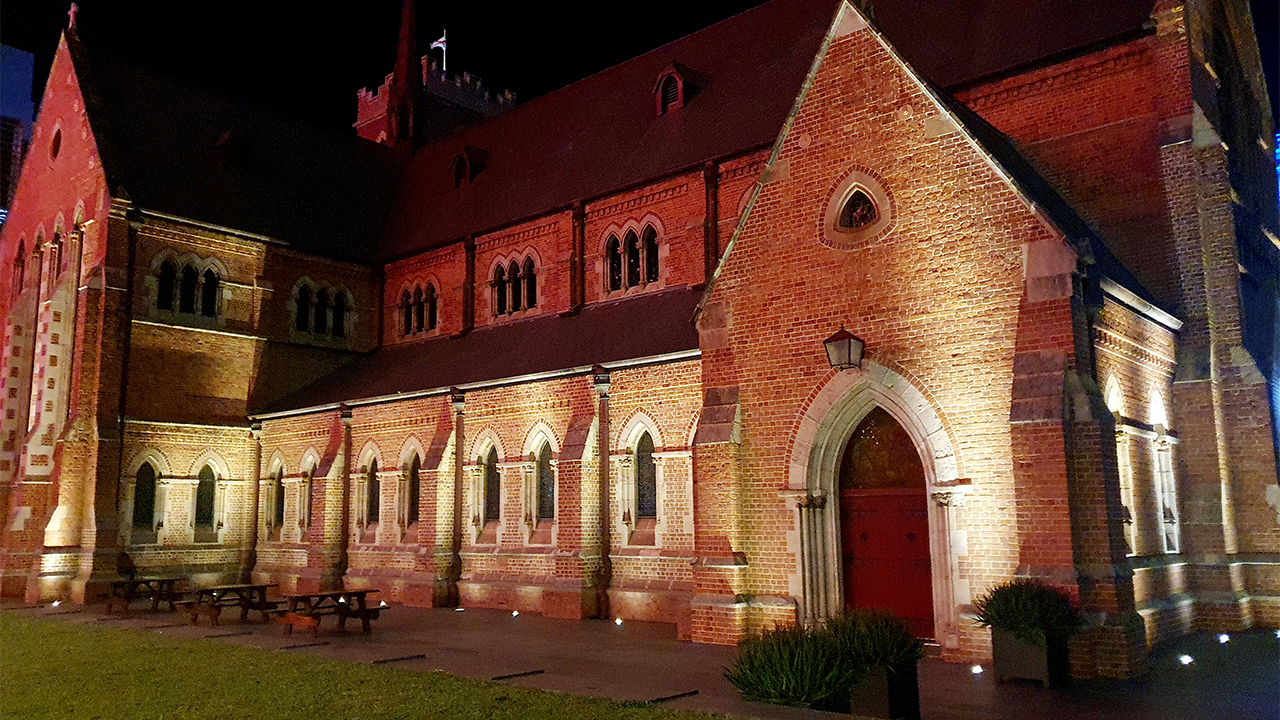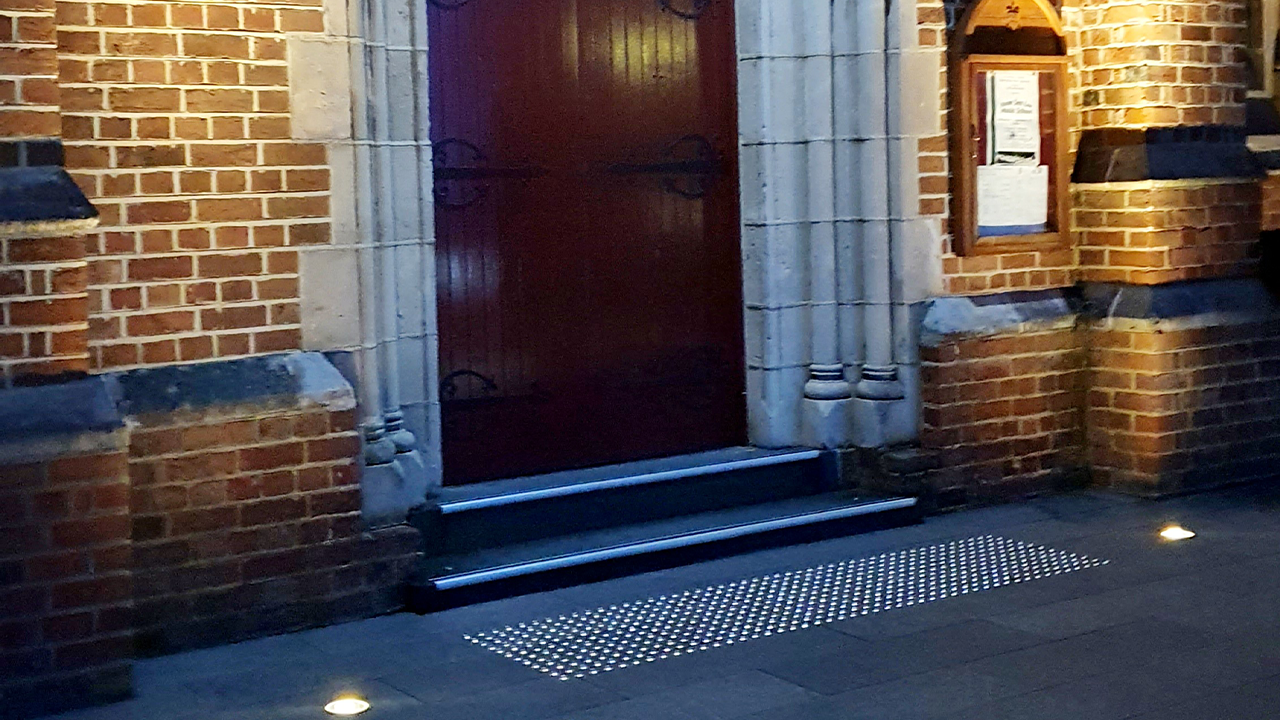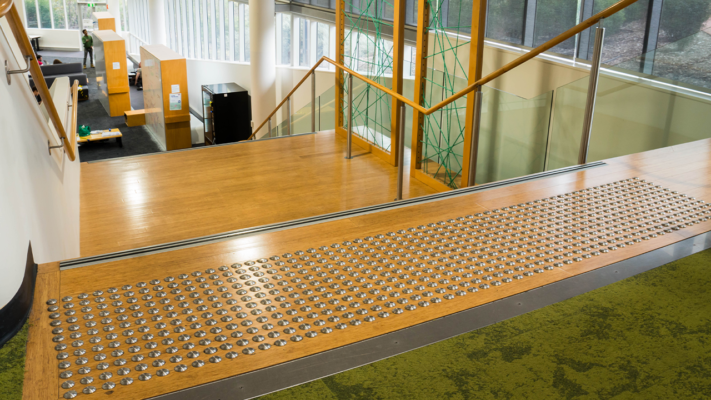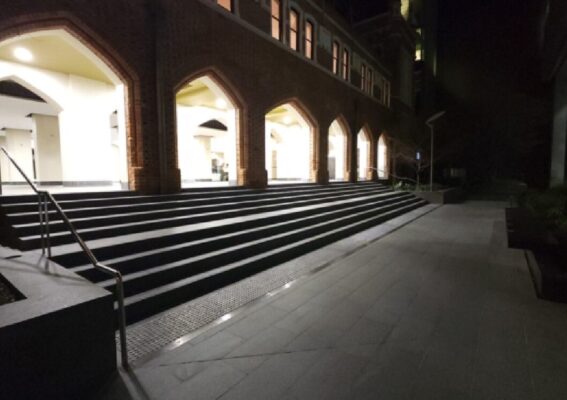St. George Church in Western Australia stands as a testament to faith, history, and architectural grandeur. As a place of worship and a historical landmark, the church is a cherished part of the community. However, to make it more accessible to all members of the congregation, including those with visual impairments, St. George Church collaborated with Dottac, a leading company specializing in tactile solutions. Dottac’s innovative use of stainless steel tactile indicators played a vital role in transforming St. George Church into an inclusive and welcoming spiritual sanctuary.
The St. George Church, with its timeless architecture and spiritual significance, is a place of solace and reverence for many. However, ensuring that everyone, regardless of their abilities, can participate fully in the church’s religious services and activities is of paramount importance. This prompted the church to explore solutions to enhance accessibility while preserving its historical and sacred character.
Tactile indicators are invaluable tools for improving accessibility in public and religious spaces. They provide tactile cues and sensory information to individuals with visual impairments, facilitating safe navigation. The inclusion of tactile indicators at St. George Church was a significant step toward making it more accessible to all members of the congregation.
Dottac’s involvement in the project began with a comprehensive assessment of St. George Church’s premises. This assessment aimed to identify the key areas where tactile indicators could have the most significant impact. Collaborating closely with church officials and accessibility experts, Dottac ensured that the installation would be tailored to meet the unique requirements of the historical church.
One of the primary areas of focus was the entrance to the church. Dottac strategically installed stainless steel tactile indicators at the entrances, marking the transition from the exterior to the interior. These tactiles provided clear and tactile cues, making it easier for worshippers and visitors with visual impairments to locate and access the main entrance independently.
Inside the church, tactiles were placed strategically to guide congregants toward various areas, including the pews, the altar, confessionals, and the sacristy. These indicators formed tactile pathways, ensuring that individuals with visual impairments could navigate the church with confidence. The raised dots and patterns on the tactiles provided tactile feedback, helping congregants identify directional cues and transitions.
The choice of stainless steel for the tactile indicators was both functional and aesthetic. Stainless steel is known for its durability and resistance to corrosion, making it a suitable material for outdoor and indoor use. Additionally, the sleek appearance of the stainless steel tactiles added a touch of modernity while complementing the church’s historical charm.
The church’s architectural design included staircases leading to various sections. To address this, Dottac installed tactile indicators on the staircases, featuring raised dots and tactile patterns that clearly defined each step. This enhancement not only improved accessibility but also contributed to the safety of congregants and visitors.
Elevators, though not a traditional feature of churches, were vital to ensure accessibility to all levels of the church building. Tactile indicators were strategically positioned near elevator doors, aiding congregants and visitors in locating and accessing elevators independently. This commitment to accessibility exemplified St. George Church’s dedication to creating an inclusive worship environment.
The installation of stainless steel tactile indicators at St. George Church underscored Dottac’s commitment to accessibility and inclusivity. These tactile indicators symbolized a commitment to making religious services and spiritual solace accessible to everyone, regardless of their abilities. St. George Church’s dedication to accessibility, as demonstrated through its collaboration with Dottac, transformed it into a more welcoming and inclusive place of worship for all.
Furthermore, the tactiles significantly contributed to the safety and confidence of congregants and visitors with visual impairments. By providing clear and tactile cues, they facilitated independent navigation and reduced the risk of accidents, enhancing the overall spiritual experience within the church.
Dottac’s innovative use of stainless steel tactile indicators at St. George Church in Western Australia was a significant milestone in enhancing accessibility and inclusivity in a historical and sacred setting. The project not only made the church more accessible but also emphasized the importance of thoughtful design and tactile solutions in creating a welcoming and inclusive worship environment. St. George Church’s commitment to accessibility serves as an inspiring example of how historical and sacred spaces can embrace inclusivity while preserving their unique character and spiritual significance.































